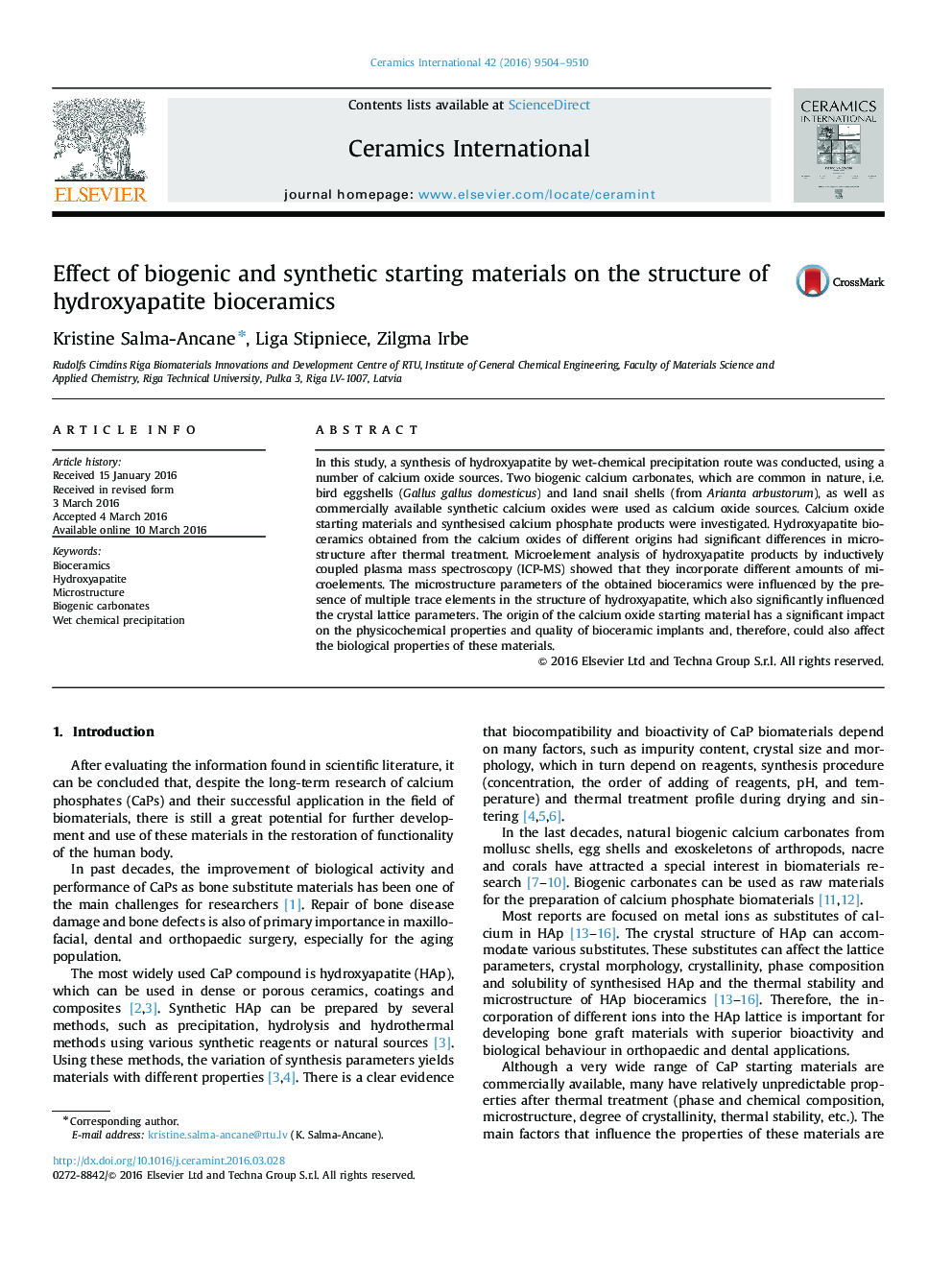| Article ID | Journal | Published Year | Pages | File Type |
|---|---|---|---|---|
| 1459019 | Ceramics International | 2016 | 7 Pages |
In this study, a synthesis of hydroxyapatite by wet-chemical precipitation route was conducted, using a number of calcium oxide sources. Two biogenic calcium carbonates, which are common in nature, i.e. bird eggshells (Gallus gallus domesticus) and land snail shells (from Arianta arbustorum), as well as commercially available synthetic calcium oxides were used as calcium oxide sources. Calcium oxide starting materials and synthesised calcium phosphate products were investigated. Hydroxyapatite bioceramics obtained from the calcium oxides of different origins had significant differences in microstructure after thermal treatment. Microelement analysis of hydroxyapatite products by inductively coupled plasma mass spectroscopy (ICP-MS) showed that they incorporate different amounts of microelements. The microstructure parameters of the obtained bioceramics were influenced by the presence of multiple trace elements in the structure of hydroxyapatite, which also significantly influenced the crystal lattice parameters. The origin of the calcium oxide starting material has a significant impact on the physicochemical properties and quality of bioceramic implants and, therefore, could also affect the biological properties of these materials.
